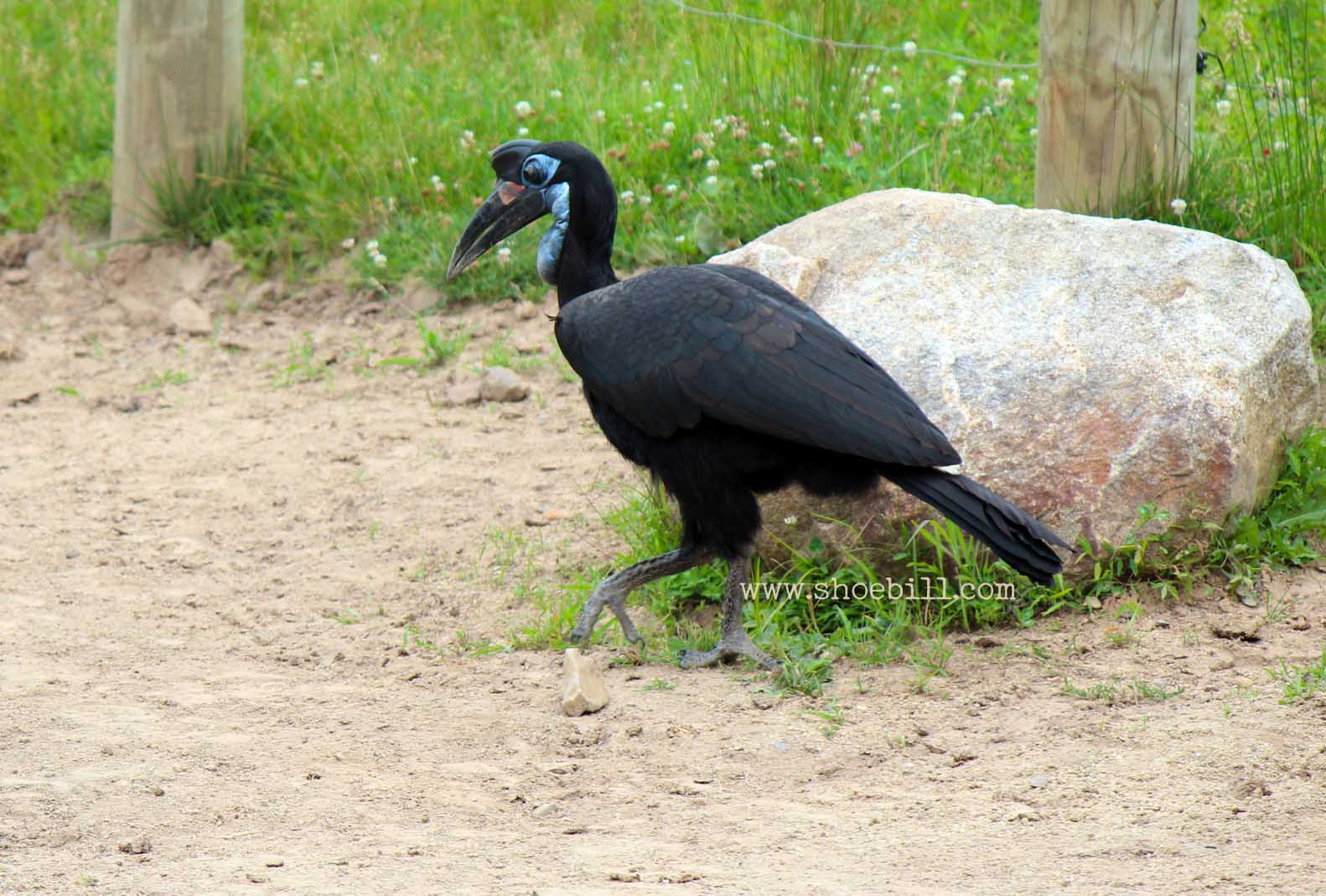Abyssinian Ground Hornbill

The Abyssinian Ground Hornbill (scientific name: Bucorvus abyssinicus) is a large bird belonging to the hornbill family. Here’s a description of the Abyssinian Ground Hornbill along with the countries where they are found:
Description: Abyssinian Ground Hornbills are striking birds with a predominantly black plumage and white primary feathers on their wings. They have a distinctive red facial skin patch, known as a wattle, which extends from their throat to their neck. Their large, downward-curved bill is black in color and is used for capturing prey, which primarily consists of insects, small reptiles, and small mammals.
These hornbills have long legs with strong, clawed feet adapted for walking and foraging on the ground. They are known for their loud, booming calls, which are often used for communication within their social groups and to establish territory.
Abyssinian Ground Hornbills are monogamous and form long-term pair bonds. They are typically found in family groups consisting of a breeding pair and their offspring. They build their nests in natural cavities in trees or rock crevices, where the female lays her eggs and both parents participate in incubating and raising the young.
Countries where they are found:
- Sub-Saharan Africa: Abyssinian Ground Hornbills are native to several countries in sub-Saharan Africa, including Ethiopia, Kenya, Tanzania, Uganda, South Sudan, and parts of West Africa. They inhabit savannas, woodlands, and grasslands with access to suitable nesting sites and foraging grounds.
These birds are adapted to a variety of habitats within their range, but they are most commonly associated with open woodland and savanna habitats. They are occasionally found in protected areas such as national parks and game reserves, where they are afforded some degree of conservation protection. However, habitat loss and degradation due to human activities pose significant threats to their populations across their range.

